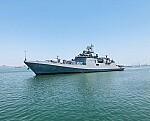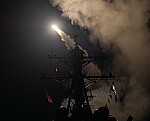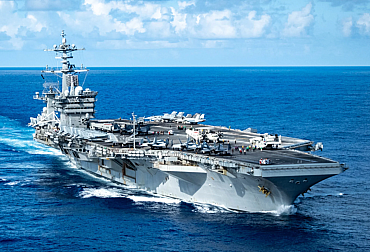Analyzing China's desert warships: A strategic move against the U.S. Navy
In the vast expanse of the Taklamakan Desert in northwestern China, an unusual sight can be seen: replicas of US warships, including aircraft carriers and destroyers, nestled in the sand. These structures are believed to be more than mere mock-ups; they are strategic tools in China's expanding military capabilities, specifically designed to pose a threat to the US Navy.

The purpose of desert warships
These replicas play a crucial role in China's defense strategy. They serve as practical targets for missile development and refinement, an area China has focused on intensively. By using these mock-ups, the People's Liberation Army (PLA) can simulate real-world scenarios and enhance the accuracy and effectiveness of its missile systems. This approach is not new; China has a history of missile testing in desert environments.

A glimpse into PLA's strategic intentions
The construction of these desert warships has been ongoing for years, with each new structure revealing insights into the PLA's objectives in both training and potential combat scenarios. Recent satellite imagery from Planet Labs has disclosed a startlingly detailed replica of the US Navy's Gerald R. Ford aircraft carrier in the Xinjiang province's Taklamakan desert. This follows previous satellite captures of US aircraft carrier- and destroyer-shaped targets back in October 2021.
A history of simulated attacks
Historical satellite images have shown similar activities in other parts of China, such as the edge of the Gobi Desert. Notably, a mock-up of a US aircraft carrier was observed, and in 2013, reports indicated that the PLA conducted exercises that simulated the destruction of this target. These exercises, corroborated by images of impact craters on the mock-ups, underscore China's focus on countering US naval capabilities.
The detailing of the Mock-ups
The latest images of the Gerald R. Ford replica are striking in their attention to detail. The model, over 1,000 feet long, features four catapult tracks on its deck, identical to those on the actual Ford, and the island structure is accurately positioned. This level of detail indicates the PLA's dedication to realistic training scenarios, aiming to mimic as closely as possible the conditions of an actual naval engagement.
Timelines and implications
This specific project began at least by July 2023, as indicated by satellite images showing the outlines of the carrier models. The USS Gerald R. Ford, the inspiration for the latest mock-up, is the US Navy's most advanced supercarrier. Commissioned over five years ago, it represents a significant investment and technological advancement for the US Navy, despite initial setbacks and inflated costs.
Conclusion
The construction of these desert warships is a clear demonstration of China's strategic planning and its emphasis on preparing for potential conflicts with formidable adversaries like the US Navy. By investing in such detailed and targeted training tools, China is not only honing its military capabilities but also sending a strong message about its readiness and determination to assert its position on the global stage.










